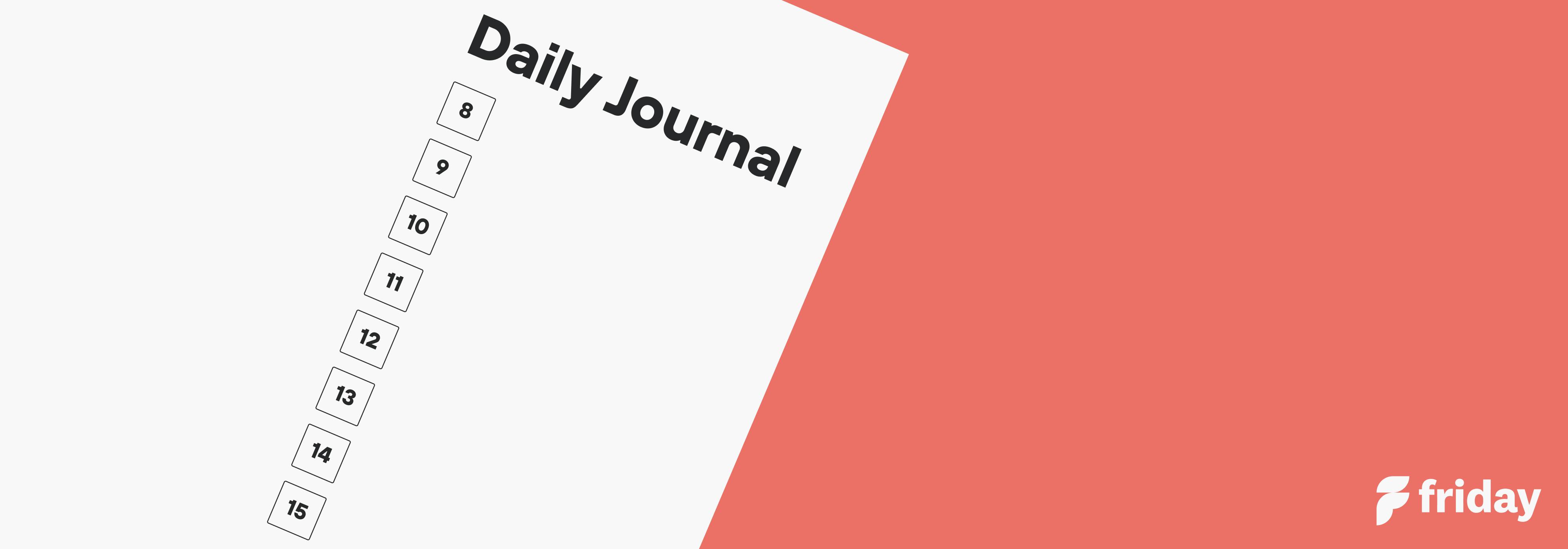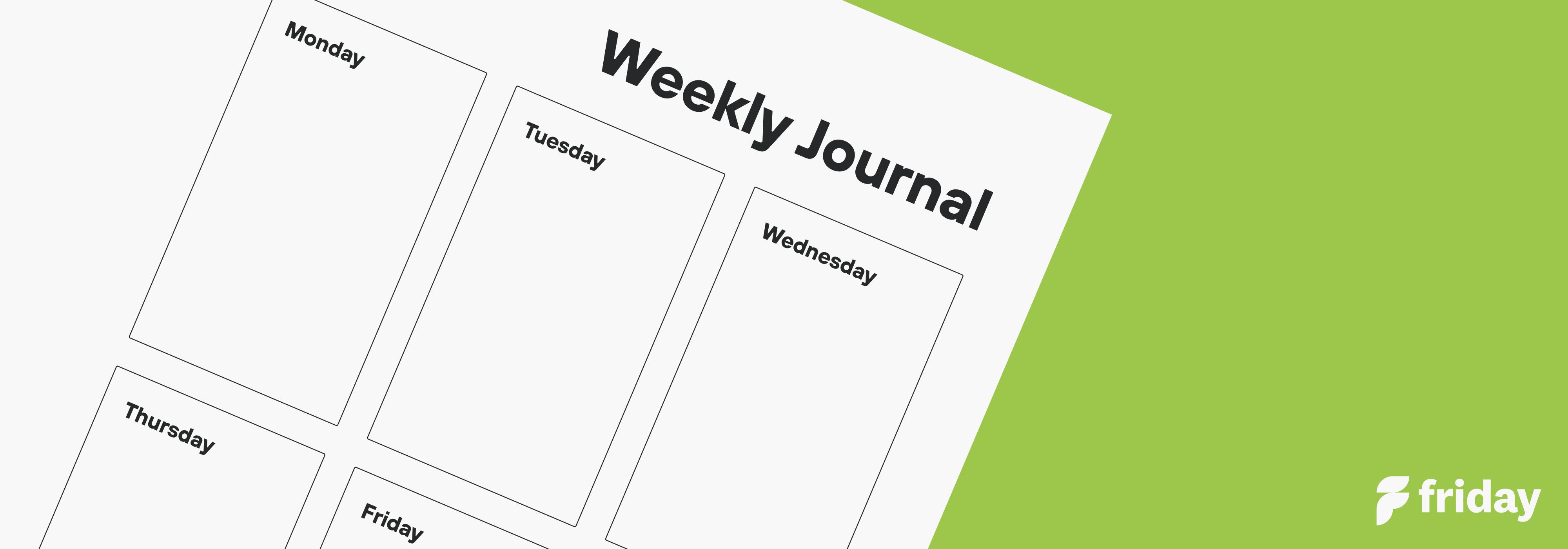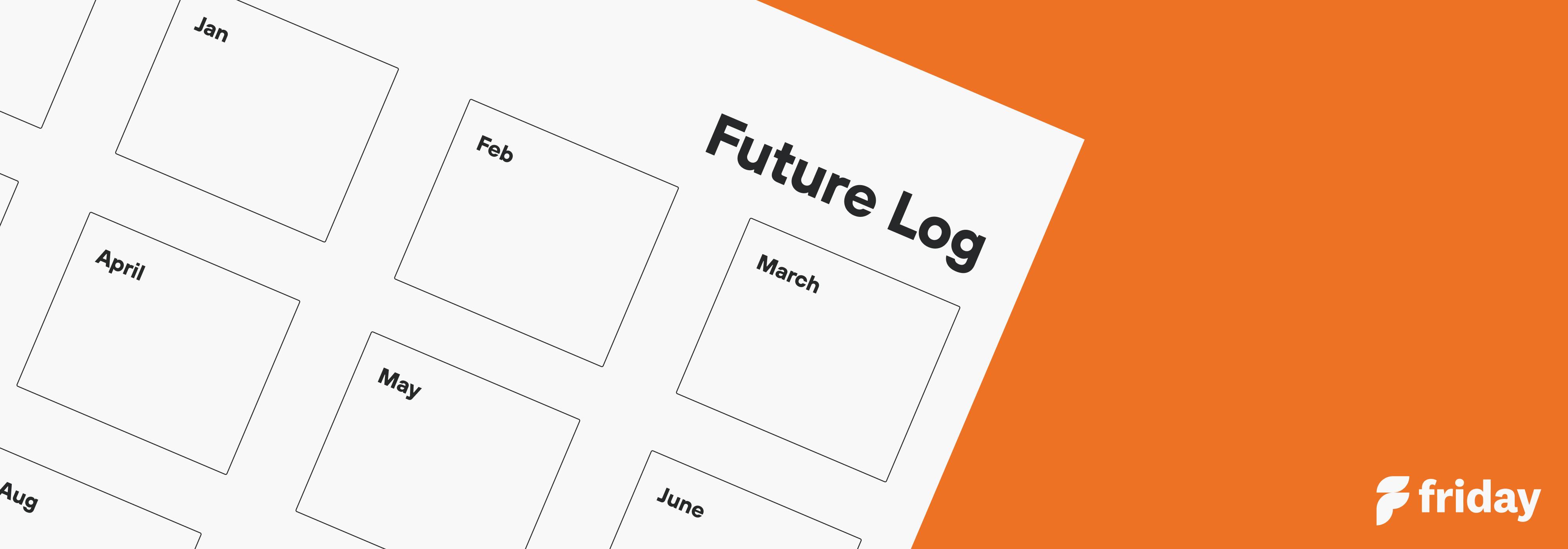The Fundamentals and Benefits of the Bullet Journal Monthly Spread

Records show that the ancient Greeks had a twelve-month calendar system, tied to their contemporary understanding of the solar and lunar cycles. In Olympia, to ensure all citizens remembered to attend the Olympic Games, the festival was held every forty-nine or fifty months, equivalent to four years, right after the Summer Solstice.
The Romans used calendars to honor idols. In 46 B.C., Julius Caesar altered the Roman calendar, making each month either thirty or thirty-one days, except “Februarius”, which had 29 days. Months were given new names to represent more current leaders: the seventh month became “Julius” and the eighth later became “Augustus”.
So how do we use our calendars? Today, the intimate astral connection does not present itself so clearly; nor is it relevant to us that months represent once very real people. Yet, we all experience the ebbs and flows of our year through these twelve blocks, which is why it’s essential to get control of them.
Most of us use calendars every day, and so we’re familiar with the benefits of effective planning. However, actively devising a more distinguished method to track your month will take you to a new level of personal productivity. The structure that many are using, both in recreational and professional capacities, is the Bullet Journal monthly spread.
What is a Bullet Journal Monthly Spread?
As you might have guessed by now, a monthly spread isn't your favorite thing to have on toast, but an overview of your month in a bullet journal.
This can include events, deadlines, targets, tasks and simpler prompts or trackers for hobbies, activities, and even your mood. While calendars are entirely capable of doing this, bullet journaling (BuJo) is designed to remove irrelevant clutter so that you can present your ideas as effectively as possible.
Bullet journals are an imaginative reply too rigid, unmoving calendars. Some split their months into weeks, whilst others place their dates in the middle of the page, so they can categorize the left and right. Whether you find yourself with a blank or lined notebook, or using an online platform, the purpose remains the same. A monthly spread is your chance to display a manic month as a manageable, organized and convenient roadmap.
Here are a few ideas and inspirations for a monthly spread layout:
1. Basic Box
Even if your design closely resembles a regular calendar, you will get added benefits because the monthly spread is meant to be utilizes alongside your weekly and daily spreads. Allocated space for each day allows you to note important events and appointments, whilst supplementary sections can include your list of more challenging tasks or goals. The image below is from Bullet Journal Addict:
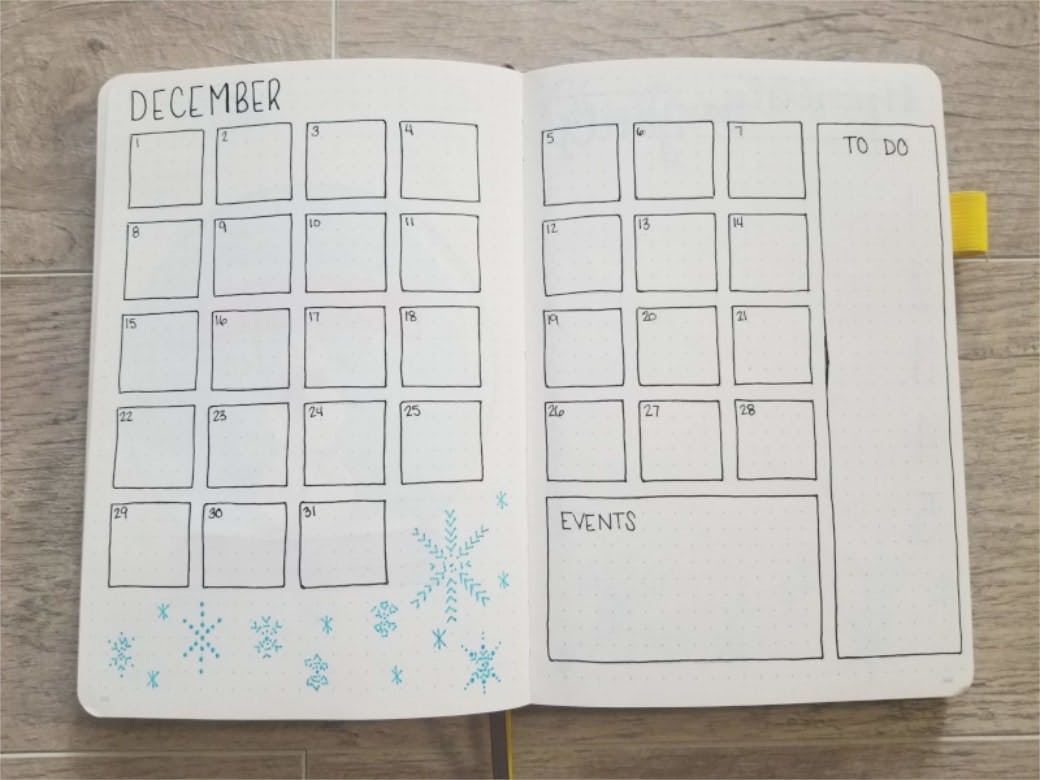
2. Linear / Minimalist
As Bullet Journaling is principally the notion of “Rapid-Logging” your ideas, “a way of capturing information as bulleted lists,” using a linear model for your monthly spread complements this philosophy. You can present the dates as simple numbers, or letter-number combinations. For example, Saturday the 10th can become S10, or simply 10. A “Next Month” section is a great tool to migrate your unfinished projects into a new timeframe. Image from My So-Called BuJo:
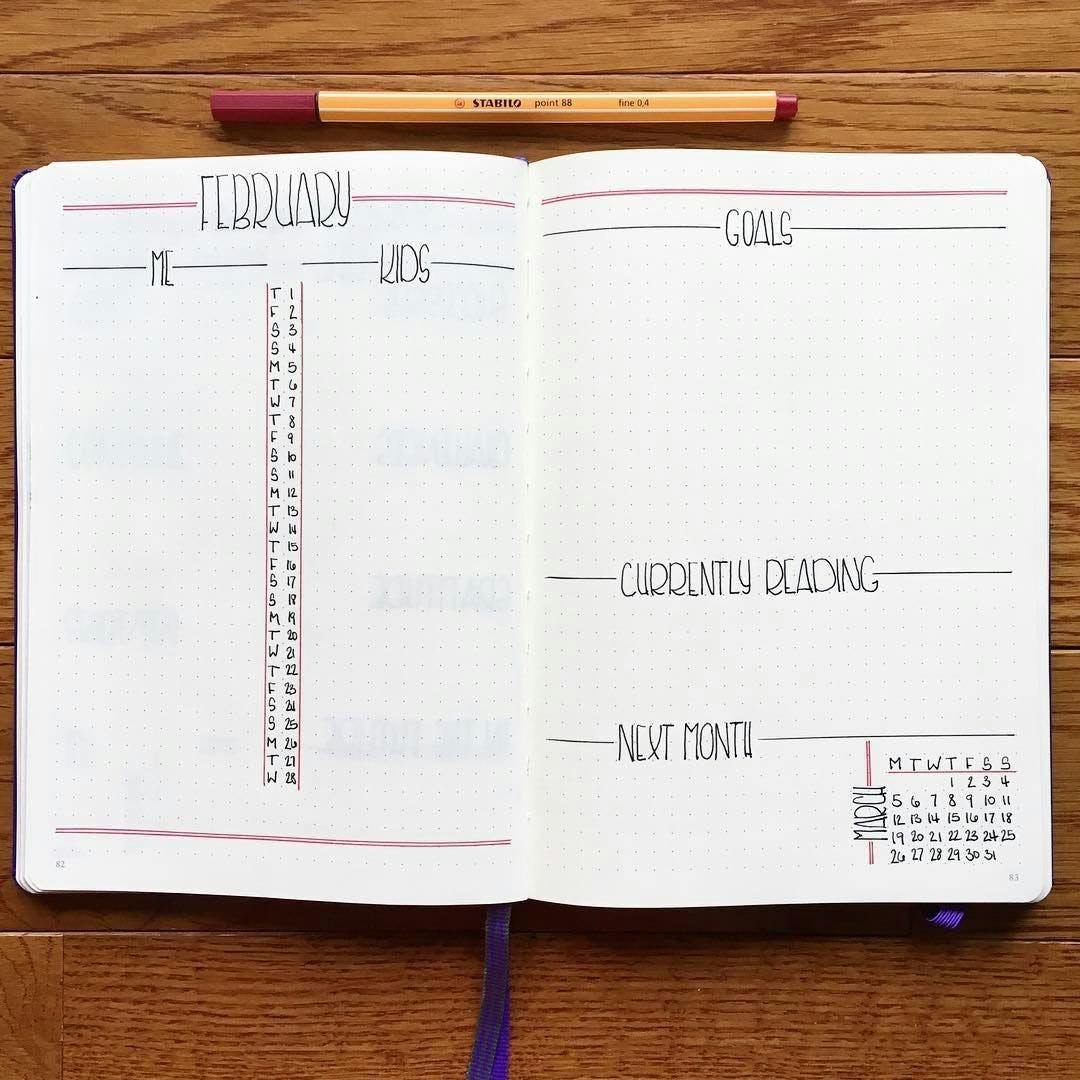
3. Linear (Supplemented)
With linear models, depending on what suits your personal style, you have the choice to place your dates either at the edge or in the middle of the page. For the visually-stimulated, add colour to separate the weeks, code your tasks and responsibilities, or create inspirational doodles and quotes. Additionally, you can track financials, important dates, or any metric relevant to you. Image from Haley Journals:
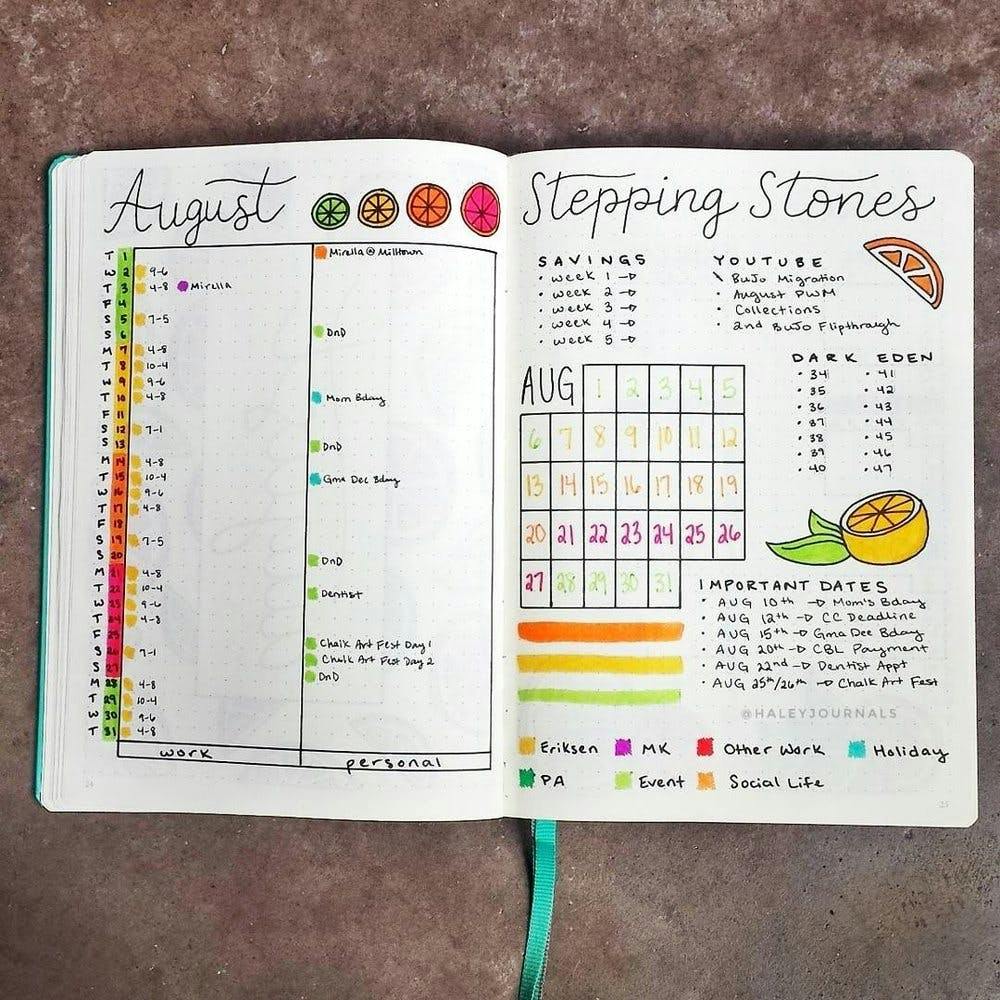
4. Modular
If you become uncontrollably agitated to see a crooked picture, modular planners combine the satisfaction of a clean, structured design with the flexibility to modify your content. This layout accommodates either linear or box calendars, but make sure you leave some room for habit trackers and monthly goals. Image below is from SquareLime Designs:
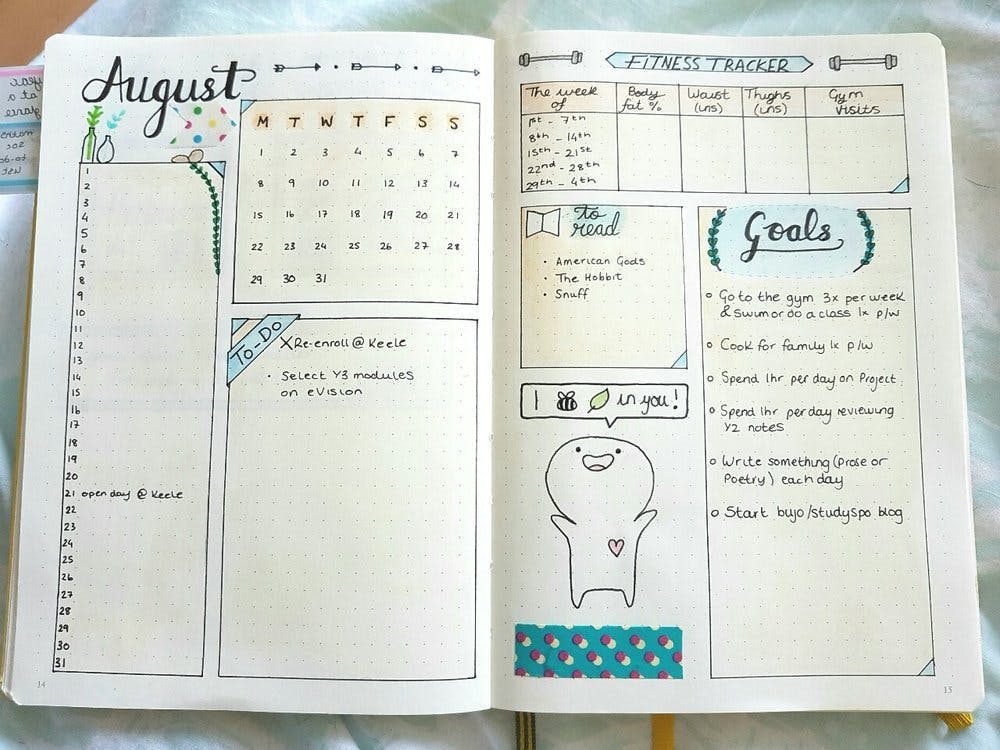
5. Circular
The circular spread is reminiscent of good, old-fashioned mind-mapping. In this context, however, upcoming events and due dates are joined to the corresponding numbers with straight lines, and color-coded accordingly to specific aspects of life. Truth be told, this one is a little less practical and you may struggle to find anyone who has it tucked away in their Bullet Journal. However, it acts as a reminder that your monthly spread can take any conceivable form. Image from Little Miss Rose:
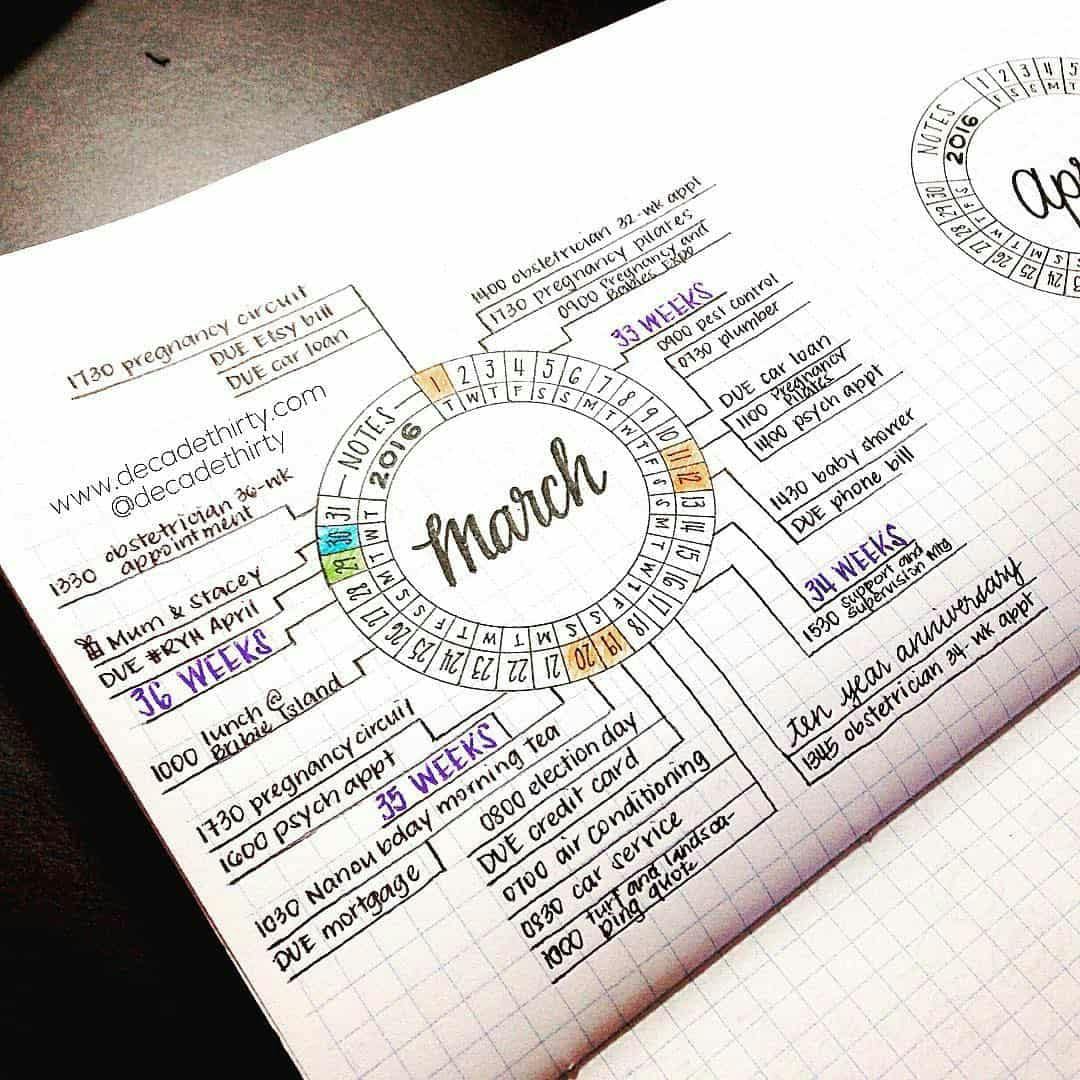
What is a Digital Bullet Journal Monthly Spread?
There are core differences between digital and paper journals. While diehard fans of paper may talk to you about their fine-liner collection, or make you touch their Moleskin notebooks, digital formats suit a large proportion of people better.
Structurally, digital monthly spreads work like a calendar. You are able to view individual days or scope out to the entire month. Further, you can import and synchronize your existing calendar and task apps, so if you take advantage of various services you can see them all in one place.
If you’re interested in journaling in a professional sense, or work journaling, digital will offer you easier communication and record-keeping facilities.
Digital formats are not always able to accommodate every artistic aptitude, so if you love to doodle, sketch and swirl around the page, you might look elsewhere. However, don’t lose sight of the point of a Bullet Journal: compiling information in the most productive way. In this sense, the inherent speed and convenience of digital over analogue is the clear advantage.
If you’re out and have forgotten your notebook, online platforms will keep you prepared. The ability to open up your digital journal with any device will be a godsend when you most need it.
How To Use a Digital Bullet Journal in Friday
1. Use the Friday planner as your bullet journal. Find meetings, tasks, routines, and goals in one place, like a log.
2. Integrate your tools. The Google Calendar, Outlook/Microsoft To Do, Todoist, Asana, ClickUp, Trello and others can work with the Friday planner.
3. Install the Friday Chrome extension. With the Chrome extension, you'll find tasks and meetings in each new tab that you open.
4. Set personal routines. Enter responses as a check-in, end of the week reflection, for morning gratitude, and lots more templates to choose from.
Read more about using Friday as a digital bullet journal.
What are the Benefits of a Bullet Journal Monthly Spread?
The Fresh Start Effect
We’re all familiar with the fallacy of New Year’s Resolutions; we are fourteen percent more likely to start a diet on a Monday; and have you ever experienced the otherworldly desire to sleep in until 10am when the time is 9:04. Our bursts of motivation and subsequent surrenders are closely linked to our relationship with time.
Katherine L. Milkman’s paper in the journal Management Science suggests that “people’s motivation to pursue personal goals can be altered by the initiation of new mental accounting periods... [such as] time dividers on the yearly calendar.”
“Consistent with our hypothesis,” she continues, “people create more new goals at the beginning of the month and year as compared with the end of the month and year.”
Capitalizing on this natural rise in motivation, what Milkman coins the “Fresh Start Effect”, is the secret to increased productivity. How do we capture and maintain this strange energy at the beginning of each month? Well, using monthly spreads can channel your aspirations into a quantifiable body that encourages positive self-change.
The best part is that even if you fail to meet your goals, next month is another fresh start. Bullet Journaling is a fresh start, productive middle and accomplished end.
Review Yourself, Improve Yourself
Any successful business never neglects employee performance reviews. These professional affairs consider the quality and efficiency of an individual’s work, how frequently they meet deadlines, and their ability to hit targets. When it comes to personal reflection, and the chase for personal productivity, perhaps it shouldn’t be any different.
“When you self-assess you become an active participant in your own evaluation,” says the University of Virginia, “Your involvement enables you to honestly assess your strengths and also areas you need to improve.”
Professor Robert Stebbins, a prolific writer on leisure and well-being, writes that “‘getting to know oneself’ relates closely to self-fulfillment, to learning what, as individuals, we are capable of, have an aptitude for and hold a background preparation to do.”
When you finish the month, looking back at your spread is an opportunity to not only reflect on your performance, but also adjust your long-term aims. Monthly spreads give you the chance to acknowledge unmet goals not as failures but chances to reconsider your objectives and the steps you can take to achieve them at a later time. BuJo incessantly encourages us to review our progress, after every day, week and month.
Time Well-Spent
When you have creative input over how your month is illustrated, you will feel a stronger attachment to your schedule. In fact, as a direct consequence of consciously allotting and investing your time, you begin to improve your organizational skills.
In a 1988 entry to Journal of Personality and Social Psychology, Bond and Feather present the idea that how we view and structure our time, with respect to productivity, affects general well-being. They write that “the results [of these studies] indicated positive relations between perceived use of time and a sense of purpose in life, self-esteem, reported health [...] and Type A goal-striving.”
More simply put, the more productive you think you’ve been, the more productive you will become. A monthly spread shows you exactly what you achieved over the course of that time. Every time you add a task, mentally equate time to it and successfully complete it, you add evidence of productivity and reinforce the idea that your time is being used valuably.
Bullet Journaling is a creative response to the traditional ways of ordering our thoughts as a way to craft a system that enhances our ability to track personal and professional goals, and hit those targets!
We still use the Roman calendar and attend the Olympic Games, but our modern month is far more hectic than our ancestors ever could have imagined. Aristotle said "we are what we repeatedly do. Excellence, then, is not an act, but a habit.” It’s true, improving your productivity is a gradual, habitual process, one which begins with the effective preparation and application of your time.

